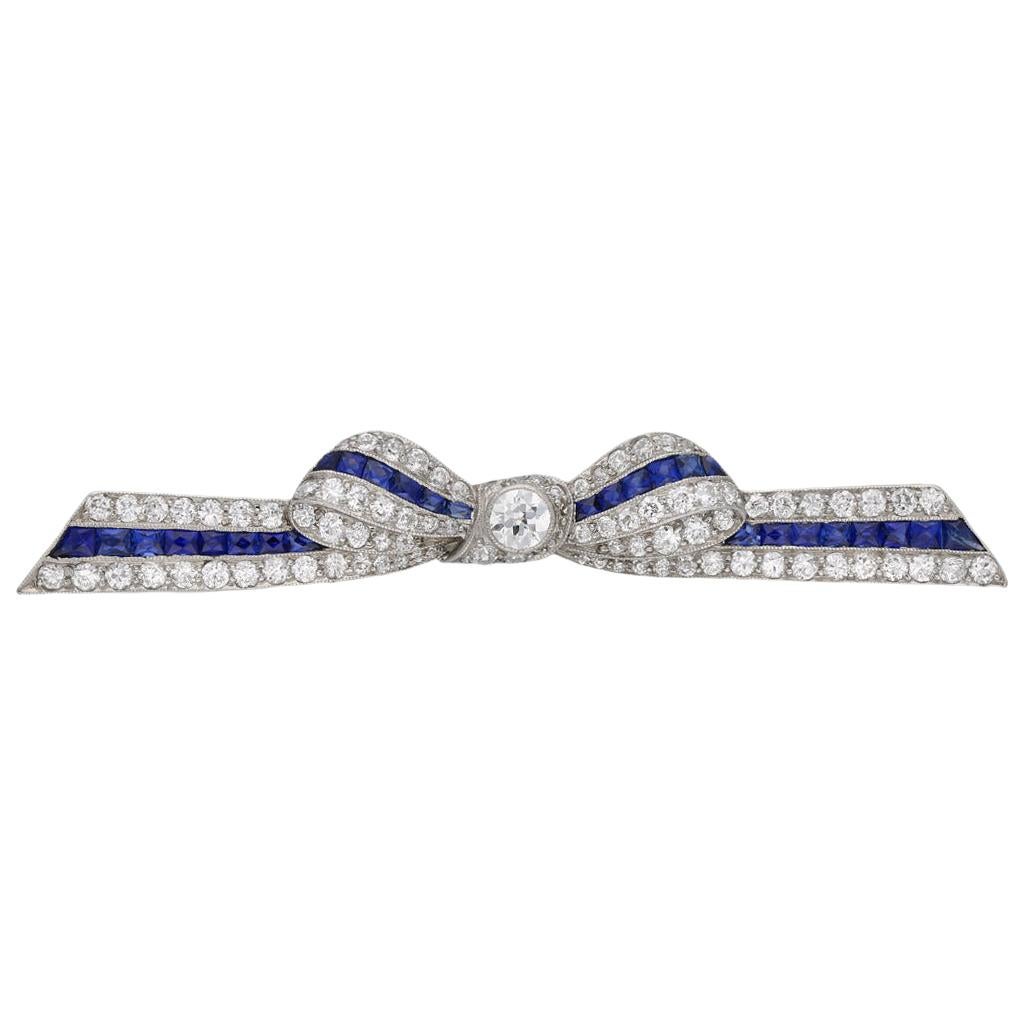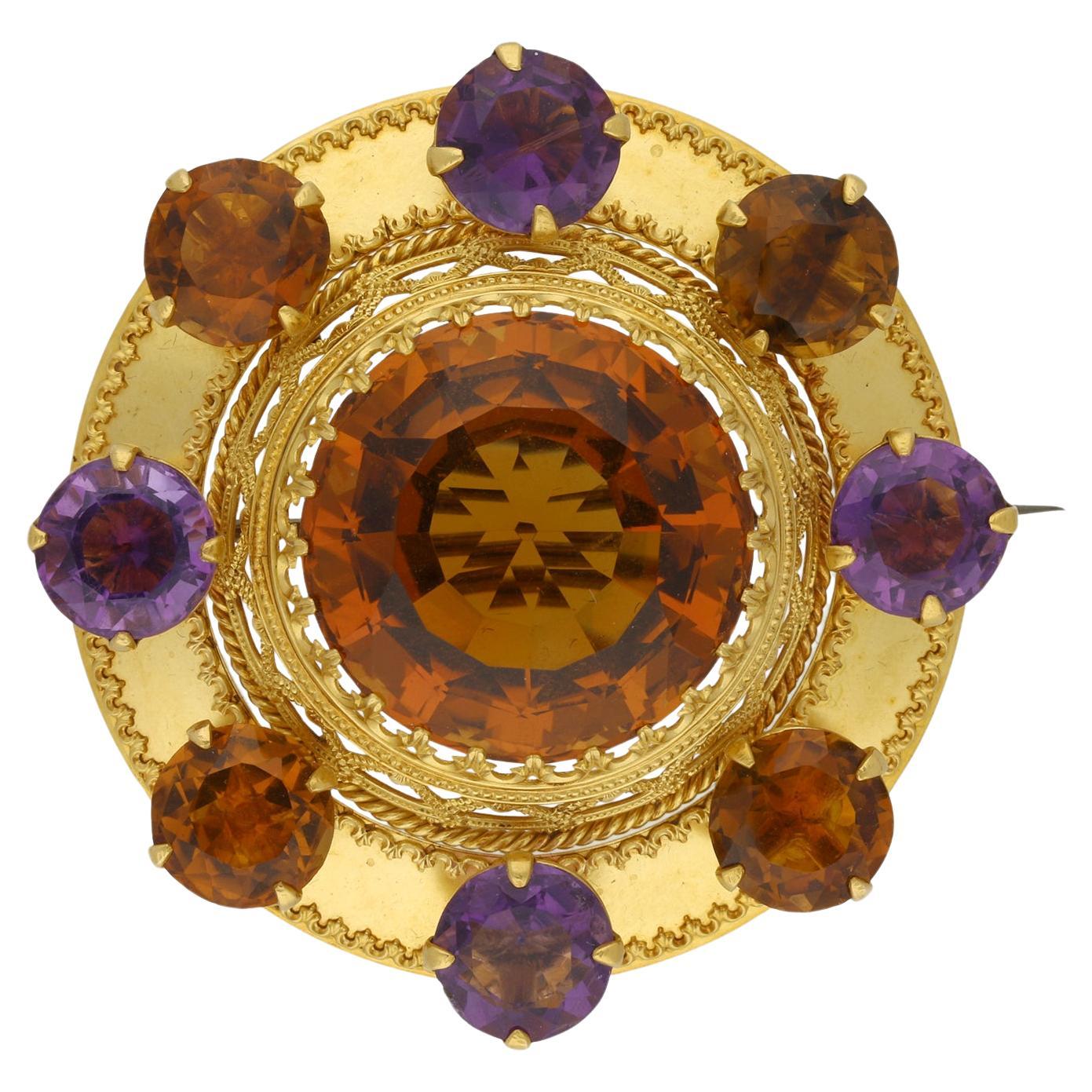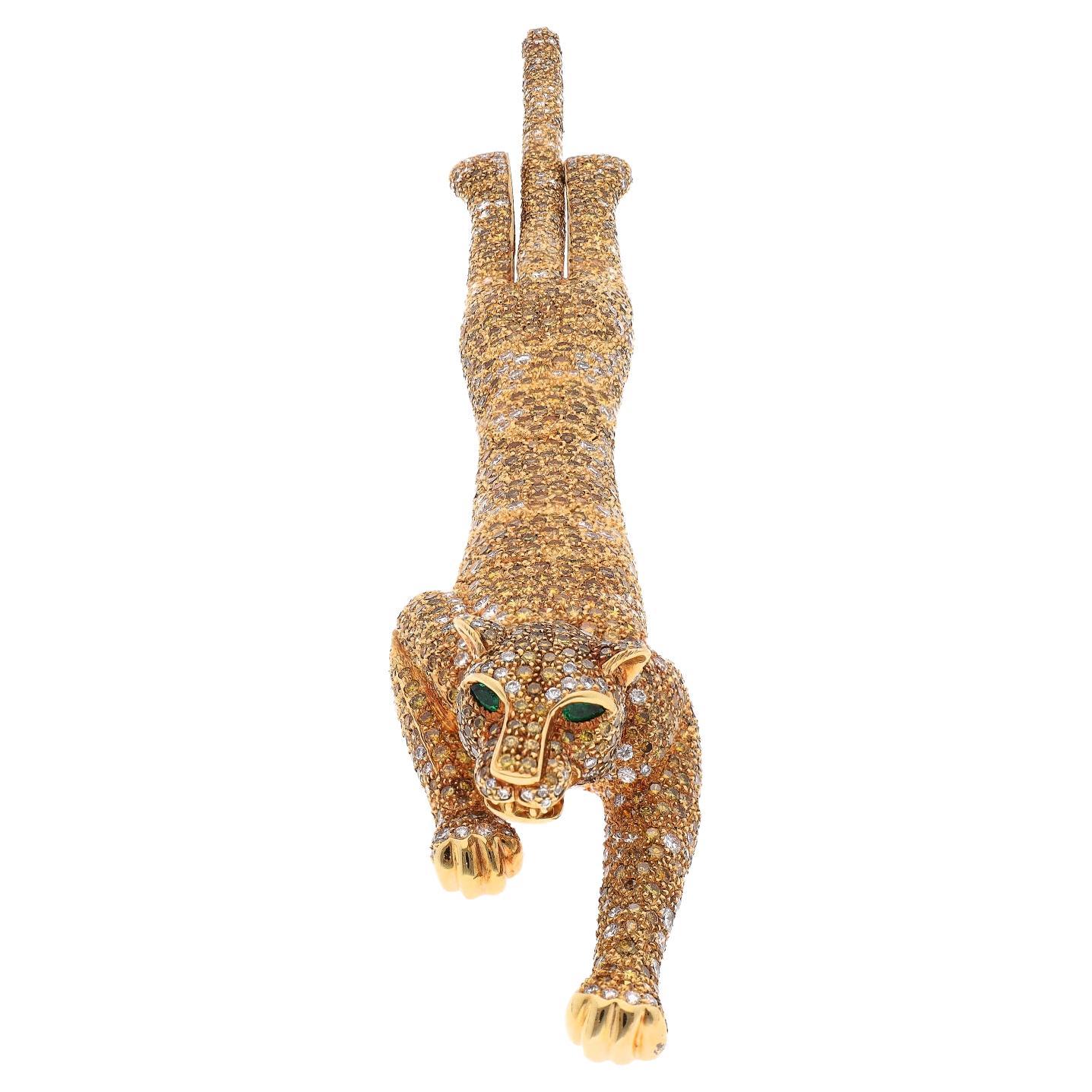Items Similar to Set of Art Deco Buckle Clips
Want more images or videos?
Request additional images or videos from the seller
1 of 6
Set of Art Deco Buckle Clips
About the Item
Elegant set of 3 Art Deco Buckle Clips from the 1920's. High quality early maker likely by Trifari. Open buckle design with baguette borders.
Each 1" x 1". 1930's USA Unsigned.
- Creator:
- Metal:Rhodium
- Dimensions:Height: 1 in (25.4 mm)Width: 1 in (25.4 mm)Length: 1 in (25.4 mm)
- Sold As:Set of 3
- Style:Art Deco
- Place of Origin:United States
- Period:1930-1939
- Date of Manufacture:1930
- Condition:Wear consistent with age and use. Unsigned Trifari.
- Seller Location:New York, NY
- Reference Number:1stDibs: LU4622433882
About the Seller
4.9
Vetted Seller
These experienced sellers undergo a comprehensive evaluation by our team of in-house experts.
1stDibs seller since 2009
1,659 sales on 1stDibs
Typical response time: 8 hours
- ShippingRetrieving quote...Ships From: Riverdale, NY
- Return PolicyThis item cannot be returned.
More From This SellerView All
- Mexican Sterling Gazelle BroochLocated in New York, NYQuality Mexican Sterling Gazelle Brooch from the 1940's. Unknown maker of high quality with Deco overtones. Most Mexican jewelry of the period is hol...Category
Vintage 1940s Mexican Art Deco Brooches
MaterialsSterling Silver
- Trifari Retro Cowboy BroochBy TrifariLocated in New York, NYCharming Trifari Retro Cowboy brooch from the 1950's. Dancing figure in pinkish gold plate with pave crystal decoration. 2.25" x 1.25". 1950's USA.Category
Vintage 1950s American Retro Brooches
MaterialsGilt Metal
- Rare Mazer, Joseph Wuyts Whispering Angel Jabot PinBy MazerLocated in New York, NYRare Mazer, Joseph Wuyts Whispering Angel Jabot Pin from 1940's USA of gilt metal with pave accents. Rare collectable series from Mazer. 3.5" x .5".Category
Vintage 1940s American Art Deco Brooches
MaterialsGilt Metal
- French Ribbed Gold Circle BroochLocated in New York, NYElegant French Ribbed Gold Circle Brooch from the 1950's set with semiprecious stones such as amythest, garnet, tourmaline and blue zircon. 1.25". 1950's France.Category
Vintage 1950s French Brooches
MaterialsAmethyst, Garnet, Tourmaline, Blue Zircon, Gold, 18k Gold
- Salvador Dali Aphrodite Tie PinBy Salvador DalíLocated in New York, NYParfums Salvador Dali Aphrodite tie pin created for the release of Salvador Dali's "Salvador Dali" perfume. The now-iconic pendant form was model...Category
Vintage 1980s American Artisan Brooches
MaterialsGold Plate, Base Metal, Brass, Gilt Metal, Steel
- Victorian Etched Gold Garnet BroochLocated in New York, NYVictorian Etched Gold Garnet Brooch which was converted from a bracelet into a brooch circa 1910. Early 14K gold hand etched setting with octagonal ...Category
Antique 1850s American Victorian Brooches
MaterialsGarnet, Gold, 14k Gold
You May Also Like
- Vintage Ruby Onyx and Diamond Classic Car BroochLocated in London, GBHere we have a superb vintage brooch. The piece has been crafted from 18ct yellow gold into the shape of a classic car from the 1930s. Automobiles of the 1930s exhibited many notable...Category
Vintage 1930s Brooches
MaterialsDiamond, Onyx, Ruby, Gold, Yellow Gold, Enamel
- Marcus & Co. Sapphire and Diamond Bow Brooch, American, circa 1935Located in London, GBSapphire and diamond bow brooch by Marcus & Co, American, circa 1935. A yellow gold and platinum bow form brooch set with one central row of twenty eig...Category
Vintage 1930s American Art Deco Brooches
MaterialsDiamond, Sapphire, Platinum
- John Brogden Shell Cameo Brooch and Earrings, English, circa 1870By John BrogdenLocated in London, GBAntique shell cameo brooch and earrings by John Brogden, English, circa 1870. A yellow gold suite of jewellery, the brooch composed of a horizontally situated oval Bull’s Mouth shell cameo of the Greek goddess Selene riding a serpentine dragon in a rubover collet setting, encircled by a conforming frame of gold beading and twisted gold wire punctuated with four gold palmette form plaques engraved and decorated with dark blue enamel and placed at the cardinal points, the reverse mounted with a hinged pin and scroll clasp, the earrings each composed of a vertical oval Bull’s Mouth shell cameo engraved with a bust length portrait of Selene with crescent-set headdress, encircled by a conforming frame matching that of the brooch with the addition of a pendant decoration composed of a horizontal bar of gold beading and twisted gold wires suspending gold link chains graduated from centre and ending in conical gold elements, the reverses mounted with French wire fittings, all in a fitted red leather case, the interior marked ‘FIRST CLASS PARIS MEDAL/ 1855.1867.1851/ PARIS FIRST CLASS & LONDON PRIZE MEDALS/ JOHN BROGDON/ Goldsmith/ MANUFACTORY/ 16, Henrietta St. Covent Garden/ London’. The cameo—defined as a gem, usually either a mineral or a shell, upon which a design has been carved in relief—is believed to have originated in Hellenistic Greece, during the third century BC. These miniature sculptures, at that time confined to the medium of hardstone, are thought to have been made with the primary purpose of personal adornment. The same practice of mounting cameos in jewellery was then continued by the Ancient Romans, and they are known to have been worn by many a Roman emperor. After the fall of Rome the fashion for cameos went into a decline, until it was again revived during the Renaissance period, brought about by a keen interest in the ancient world. At this time both antique and contemporary cameos were mounted in jewellery, as well as collected as objet d’art. The art of cameo cutting was revived in Italy, where it would remain a centre for the coming centuries. Again there was a lull in interest in carved gemstones, until the Neoclassical revival of the eighteenth century, largely stimulated by the discoveries of the ancient Roman cities of Pompeii and Herculaneum. As with the Renaissance, antique specimens were generally prized over modern cameos, and the worldliest men in Europe held them among their collections of art and antiques. That said, carving centres in Rome and Torre del Greco (near Naples) in Italy were established in response to the demand of the Grand Tourists, who travelled to Italy and Greece to become educated in the wonders of the ancient world. It was at this time that shell cameos, mostly made in Torre del Greco due to its proximity to the sea, became more popular, owing to the relative ease in carving shell over hardstone. In addition to Rome, hardstone cameos also became a specialty of Idar Oberstein, Germany, which had a long history with both the gem mining and cutting trade. In a shift away from the collector’s cases of the previous century, the nineteenth century saw a strengthening in the fashion for wearable cameos. After the Empress Josephine donned a cameo-set suite of jewellery at the coronation of Napoleon in 1804, cameo jewellery became all the rage. Napoleon played a further hand in promoting the art by establishing a gemstone carving school in Paris, inspired by his appreciation for the arts of the ancient world. By the mid-nineteenth century shell cameos, in part due to their lightness compared with hardstone cameos, were the height of fashion. Large shell cameos as well as hardstone cameos were set into contemporary mounts, often as suites of jewellery. Some of the best cameos of the nineteenth century—carved by a select group of recognized carvers—were set into revivalist mounts, corresponding to the subject matter. In Victorian England cameo jewellery was particularly prized, due in part to the fact that the Queen owned and wore a number of cameo jewels. One example which can often be seen in official portraits is the Badge of the Order of Victoria and Albert, carved by Tommaso Saulini of Rome, who also produced cameos for the maker of the present suite, John Brogden. To meet demand some carvers set themselves up in London, including William Schmidt, a German carver from Idar Oberstein, who produced cameos for top London jewellers, including Brogden, Carlo Giuliano and Child & Child. In fact, Schmidt purports to have been the first to carve cameos out of opal, which Brogden reportedly displayed in the Paris Exhibition of 1878. An extant example, now in the collection of the British Museum, was set by the Giuliano firm. Regarding subject matter, cameos throughout time have been largely figural, from bust length profile portraits to scenes with multiple full-length figures, and sometimes animals. Ancient Greek and Roman cameos often depicted mythological scenes as well as contemporary figures. During the Renaissance, mythological scenes were popular, often taken directly from ancient sculpture, as well as portraits of notable contemporary figures. During the eighteenth and nineteenth centuries, due to the revivalist styles, both Renaissance and Classical subjects were copied and set into matching (and sometimes unmatching) revivalist mounts. From the Renaissance through the Victorian era, being able to recognize the source of the carving in a cameo was a mark of erudition, revealing in the wearer knowledge of Classical art. As mentioned, the present cameo parure...Category
Antique 1870s English Victorian Brooches
MaterialsYellow Gold
- Victorian amethyst and citrine brooch, circa 1860.Located in London, GBVictorian amethyst and citrine brooch. Set to centre with one round old cut citrine in an open back claw setting with an approximate weight of 60 carats, encircled by four round old ...Category
Antique 1860s Brooches
MaterialsAmethyst, Citrine, Yellow Gold
- Ruby and diamond brooch, circa 1945.Located in London, GBRuby and diamond brooch. Set to centre with thirty four square baguette cut natural unenhanced rubies in open back channel settings with a combined approximate weight of 3.40 carats,...Category
Vintage 1940s Brooches
MaterialsDiamond, Ruby, Yellow Gold, Platinum
- Cartier Paris Yellow Cognac White Diamond Panther BroochBy CartierLocated in New York, NYCartier Paris Yellow Cognac White Diamond Panther Brooch Cartier describes the Panther as 'The Panther is Cartier’s iconic animal: a wild, untamable anim...Category
2010s French Modern Brooches
MaterialsWhite Diamond, 18k Gold
Recently Viewed
View AllMore Ways To Browse
Art Deco Jewelry Set
Buckle Jewelry
Vintage Buckle
Vintage Buckles
Buckle Set
Deco Buckle
1930 Baguette
Art Deco Buckle
Trifari Set
Vintage Trifari Set
Trifari Vintage Jewelry Set
1920s Vintage Brooches
Buckle Brooch
Antique Jewelry From 1800S
Garnet Gold Pin
Art Deco Platinum Bar
Diamond Lapel Pins
Flower Gold Pearls Pin





